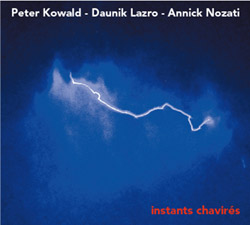
Recordings from 2000 at Instants Chavires in Montreuil, France from the free improvising trio of Peter Kowald on double bass, Daunik Lazro on alto & baritone sax, and Annick Nozati on voice, in a uniquely informed dialog representing the only time this masterful trio performed.
In Stock
Quantity in Basket: None
Log In to use our Wish List
Shipping Weight: 3.00 units
EU & UK Customers:
Discogs.com can handle your VAT payments
So please order through Discogs
Sample The Album:
Peter Kowald-doublebass
Daunik Lazro-alto saxophone, baritone saxophone
Annick Nozati-voice
Click an artist name above to see in-stock items for that artist.
Label: Fou Records
Catalog ID: FR-CD 07
Squidco Product Code: 23402
Format: CD
Condition: New
Released: 2014
Country: France
Packaging: Cardboard Gatefold
Recorded at Instants Chavires in Montreuil, France, on February 17th, 2000, by Jean-Marc Foussat.
"This disc represents the outcome of an improvised concert from February 2000 featuring double bassist Peter Kowald, saxophonist Daunik Lazro, together with the voice of Annick Nozati. Having had to resort once more to Google Translate I apologise in advance for misunderstandings and mistranslations. Comparing the French to Google's English I can recognise the correctness of it but suspect that the nuances of language have been overlooked. The liner notes start with Nozati saying that she does not sing for the sake of it. Across the range of her singing there is an urgency, a knowledge that maybe there isn't that much time to say it in. The notes go on to inform us that a few months after the recording the singer was dying following a heart attack, this information though has to be tempered when the notes continue on to say that she knew her husband would soon die. I bring this up more to say that you can hear in the quality of her voice a presage of things to come, a sense of despair, at times resonating as if from the depths of the earth. There is a mournfulness, the grieving of a thousand women over the loss of a loved one. The notes quote her as saying "I'm not here to carry a tune" and you can believe it.
The disc is a living testimony to the art of a singer no longer with us. The control that she demonstrates is exemplary. She identifies within her own qualities, a quiet voice, even when screaming, whilst, arising from the quietest moments a storm can suddenly develop, a cataclysm. For a moment feverish and lived, as if life depended on it, a living being who is not encumbered by false pretence or half measures. The next second, deep reflection, quickly followed by the refuge of experimental vocal expression, squeaks and animated babbling. To me the crowning glory of this disc is Nozati's solo number 'L'invisible', in which the sole accompaniment are provided by occasional handclaps from herself. Over the course of nearly fifteen minutes she expresses rage and reason, at points primal, from what seems madness comes 'O For The Wings Of A Dove'. If I could bottle this I'd carry it around with me and have a pick-me-up as required.
This swift movement from one style to another is redolent throughout the disc and exercised by all three protagonists. The musicians consistently evolve with individual independence, pushing different tempi, emotions, intentions, but not at the expense of the whole. At times they touch base and it is these points of assembly that invariably end up providing moments of beauty, allowing the listener to draw breath from the helter-skelter playing that has often preceded it. A case in point is the second track 'Kow Laz Noz' which sees them wandering off and returning to meet up again. Over its course the vocals cover humming, sephardic/folk/flamenco influences, scat style, Flo and Eddie at their extreme, before returning to resemble a close relative of Berio's Folksongs.
Of course to accomplish what she does, Nozati needs space to fly. There has to be an understanding between her and the other musicians that allows this to happen. A delicate balancing act between when to support, when to challenge, when to rein in, and when to let loose, needs to be negotiated. Her compadres do this admirably. Daunik Lazro's contribution should not go unmentioned. The first track has him veering from deranged snorts to the most delicate playing I have ever heard from a saxophone. The textures that he elicits from his instrument are many and varied. In lesser hands the saxophone can often start to grate under the weight of a history that has firmly pigeonholed it, but not here. His energy and inventiveness allow it to be shown as possessing more expressive qualities than it is often given credit for. Peter Kowald also demonstrates his abilities to the utmost, frenetic attacks are followed by the most delicate bowing and melodic runs.
Considering this was their only outing as a trio, the understanding between the three at times is pretty impressive. We get the concert faithfully reproduced with running order intact and the evening divided amongst solo singer, duets and trios. Personally, if I was going to be selfish, I'd like a whole album of the quieter reflective moments, but I am more than glad that this special evening was captured in its entirety."-Jack Tatty
Artist Biographies
• Show Bio for Peter Kowald "Born 1944 in Germany, died 21 September 2002 New York City; double bass, voice, tuba. Peter Brötzmann (Corbett, 1994) recounted that 'there was this young guy trying to play the bass, who was Mr Kowald, at that time seventeen years old. Peter lived with his parents. I had my little studio, so he was always hanging out at my place. But he had to be at home at 10.00, he was drinking milk. But we changed that, very soon. His parents were always very angry with me, because he never showed up at home anymore, he dropped studies of ancient languages, Greek and all that.' By this time (1962) Peter Kowald had been playing bass for two years and, with different drummers the two Peters were playing Mingus, Ornette, and Miles Davis things as well as listening to Coltrane, Stockhausen, Cage et al. Kowald was part of the European tour undertaken by the Carla Bley/Michael Mantler band in 1966 (also featuring Brötzmann) and then came work with other German musicians, membership of the Globe Unity Orchestra and the first recordings: Globe Unity, For Adolphe Sax and Summer 1967, recorded during a brief vacation in London. In particular, Evan Parker credits this visit to London for his invitation to play in the Pierre Favre/Irene Schweizer quartet and his subsequent longstanding involvement with German (and other European) musicians. Kowald's work with Brötzmann continued - on and off - on record at least, to the time of Kowald's death and included the Cooperative Trio with Andrew Cyrille, a duo on the Duos project and a recent mix of free jazz, hip-hop and rap. Peter Kowald was a member of Globe Unity Orchestra for 12 years (1966 to 1978) and for much of this time played less of a side-man role and more of an equal partner - for example, conducting the band - with the person to whom the group has become most associated, Alex von Schlippenbach. His influence is particularly noticeable on Jahrmarkt/Local fair where the two sides of composition are by Kowald (as is the second side of Live in Wuppertal and he is also credited, along with Paul Lovens as 'producing' the record, presumably sorting out the sprawling theatricality and poor sound into two 'meaningful' fragments. In his notes to 20th anniversary, Schlippenbach emphasises the importance of Kowald in creating a programme that became a lot more 'colourful'; while further pointing out that he and Kowald gradually drifted further apart 'until one fine evening after lengthy discussions which resulted in a fight in a pub in Wuppertal, this chapter also closed'. However, before this ending, from 1973 to 1978, Kowald also worked with the Schlippenbach trio (Schlippenbach/ Parker/Paul Lovens), turning it for much of this time into a regular quartet. Throughout his career, Peter Kowald worked with a wide variety of improvising musicians worldwide and in many considered and unusual situations. He recorded bass duets with Barry Guy, Barre Phillips, Peter Jacquemyn, Maarten Altena, Damon Smith and William Parker, released two solo bass recordings, and had regular groups with Leo Smith and Günter Sommer; with Joëlle Léandre and dancer Anne Martin (Trio Tartini); with dancers Cheryl Banks and Arnette de Mille and cellist Muneer Abdul Fataah (Music and Movement Improvisation); a trio with pianist Curtis Clark; a trio with Canadian alto saxophonist Yves Charuest and Louis Moholo; and Principle Life with Jeanne Lee, Klaus Hovman, and Marilyn Mazur. During the period 1980 to 1985 he was a member of the London Jazz Composers' Orchestra. He has spent periods in the US and in Japan and recorded three duo LPs (two CDs) with US, European and Japanese musicians. He also lived in Greece and similarly played and recorded with the Greek musicians Floros Floridis and Ilias Papadopoulos. By contrast, the 12 months May 1994 to May 1995 was designated Kowald's 'Year at home' project which comprised a mixture of solo works - out of which, to some extent, the last solo CD grew (Was da ist) - and group performances. In addition, Peter Kowald collaborated extensively with poets and artists and with the dancers Gerlinde Lambeck, Anne Martin, Tadashi Endo, Patsy Parker, Maria Mitchell, Sally Silvers, Cherly Banks, Arnette de Mille, Sayonara Pereira, and Kazuo Ohno. Specific works included Die klage der kaiserin (1989) with Pina Bausch, Short pieces (since 1989) with Jean Sasportes, The spirit of adventure (1990) with Anastasia Lyra, Wasser in der hand (1990/91) with Christine Brunel, and Futan no sentaku/The burden of choice (1990/91) with Min Tanaka and Butch Morris." ^ Hide Bio for Peter Kowald • Show Bio for Daunik Lazro "The French saxophonist Daunik Lazro combines a tart, piercing tone with a quick mind and a flexible philosophy of music-making. His professional start was in bassist Saheb Sarbib's orchestra, a relationship he maintained through most of the '70s, which included three recordings. His first steps playing his own music involved a radical resizing of the cast on-stage, going from orchestra playing to solo saxophone concerts and duets. In the '80s, he busily played with many on the European improvised music scene, including bassist Jean Jacques Avenel, cellist Tristan Honsinger, violinist Carlos Zingaro, drummer Christian Rollet, and saxophonist Evan Parker, among others. In the mid-'80s, Lazro expanded his partnerships to include dance and theater projects, including work with the Company of the Chance. He formed a particularly fine trio in 1987 with fellow saxophonist Michel Doneda and the brilliant ppercussionistLê Quan Ninh, playing at many of the major European festivals and also touring in Canada. Duets with the American free improviser Joe McPhee are a 1991 discographical highlight, during a period when Lazro also began playing viola. In 1993, he started his own orchestra as well as a quartet called Outlaws in Jazz with Jac Berrocal, Didier Levallet, and Dennis Charles. In 1995, he toured Europe in a triple-threat combination with both McPhee and Parker, and the former artist also joined him in a quartet the following year with the superb British contrabassist Paul Rogers. In the late '90s, he continued involvement with a series of orchestra projects, often as a guest soloist." ^ Hide Bio for Daunik Lazro • Show Bio for Annick Nozati "French avant-garde vocalist Annick Nozati first met the Belgian free jazz pianist Fred Van Hove at a festival in the summer of 1984, and the music they began making together was at once totally traditional and completely outside musical traditions. What was quite normal was for pianists and vocalists to work together, an easygoing combination harking back to classic blues and the early days of the recording industry, not to mention the combination's tradition in classical music. Yet there were not so many improvising vocalists working in avant-garde improvisation at this point, so the ever-adventurous Van Hove was naturally intrigued. By the end of the year, the two were performing their first gig together as a duo in Paris, a relationship that would continue until the singer's untimely death. The duo's formation would often be enhanced with the addition of a guest such as the British saxophonist Lol Coxhill. Nozati also worked with Van Hove in a regular trio with mind-blowing trombonist Johannes Bauer, and in the Van HoveNonet, featuring a whole crowd of serious noisemakers. The Nozati singing style was based on a total presentation of her personality, including some aspects of theater that naturally filtered into the proceedings through her activities as an actress. Her vocal creations tended to be completely spontaneous; in fact, Van Hove has held up the trio with Bauer as an example of a "true" spontaneous improvisation ensemble. It was yet another famous group that claims to have never rehearsed, and it is definitely true that Bauer and Nozati had no way to communicate other than music; neither spoke the other's language. As for the nonet, Van Hove wrote in a tribute to the singer: "She was not afraid of the eight blaring men around her, she put her foot down, she was the signboard of the group." She created several solo recordings in the early '80s, then came up with the critically praised Les Peu des Anges on the Victo label some 16 years later. She began her performing career in the mid-'60s in experimental theater. A huge influence around 1967 were the brothers Baschet, who created sound sculptures and drew in many players from the European experimental scene. Nozati's later solo recordings include wonderful examples of her improvising with her mentor Baschet's sound sculptures. She also came in contact with the Art Ensemble of Chicago during that group's extended Parisian residency, a period of experimental art and radical politics. She began to improvise with her voice from a completely self-taught background that included absolutely no formal training or classical rudiments. Her work with improvisers besides Van Hove included performances with Workshop de Lyon, Urban Sax, a trio with the brilliant French bassist Joëlle Léandre and the great Swiss pianist Irène Schweizer, Portuguese violinist Carlos Zingaro, French reedman Daunik Lazro, hearty German bassist Peter Kowald, and many players from the English scene including fellow vocalist Maggie Nicols. Nozati also worked in contemporary music theater in works by the composer Georges Aperghis. She was articulate discussing the nature of work, and gave lectures on vocal improvisation on campuses such as the French University of Lille. She was also an accomplished painter and claimed to have been inspired musically by the fine art of mixing different pigments of paint." ^ Hide Bio for Annick Nozati
7/9/2025
Have a better biography or biography source? Please Contact Us so that we can update this biography.
7/9/2025
Have a better biography or biography source? Please Contact Us so that we can update this biography.
7/9/2025
Have a better biography or biography source? Please Contact Us so that we can update this biography.
Track Listing:
1. Laz Noz 12:56
2. Kow Laz Noz 12:05
3. "L'Invisible" 14:48
4. Laz Kow 10:12
5. Kow Noz 9:06
6. Noz Laz Kow 8:07
Improvised Music
Free Improvisation
European Improvisation, Composition and Experimental Forms
Trio Recordings
Kowald, Peter
Unusual Vocal Forms
Search for other titles on the label:
Fou Records.


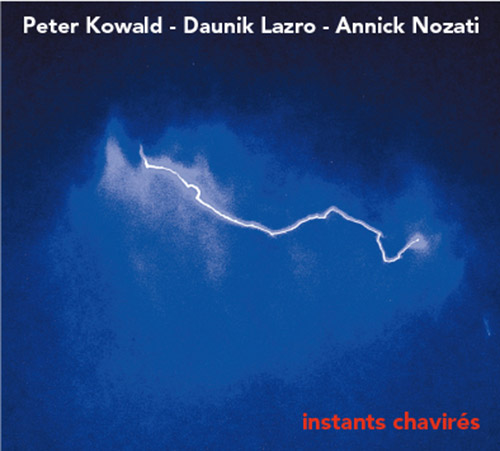


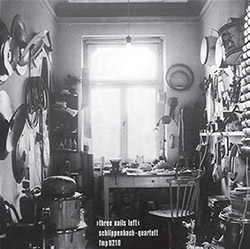




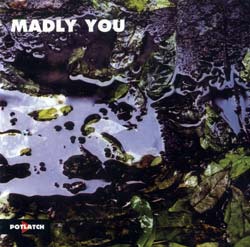
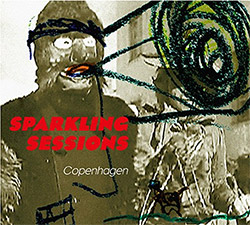
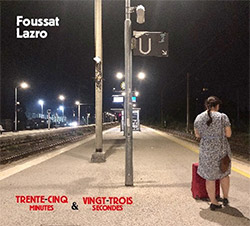
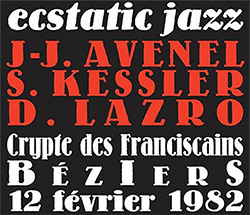
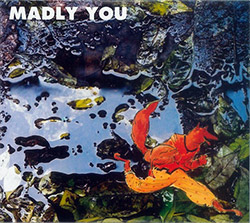
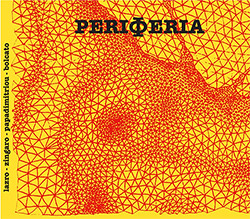
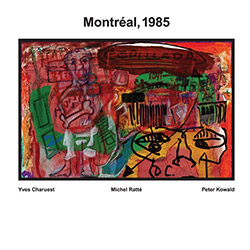

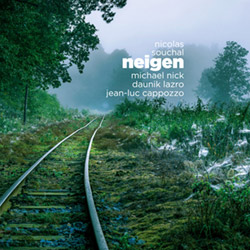
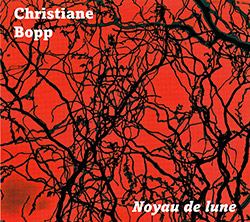


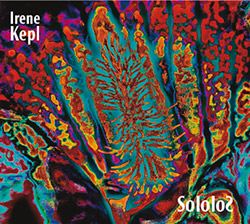

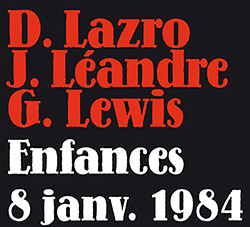
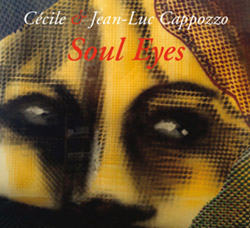
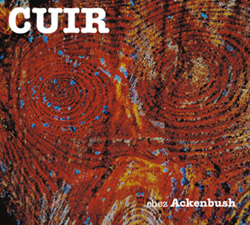
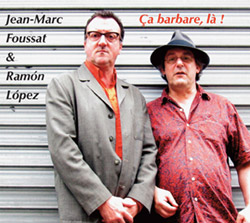
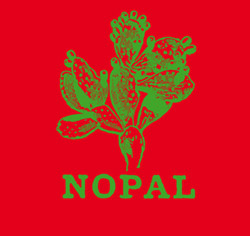



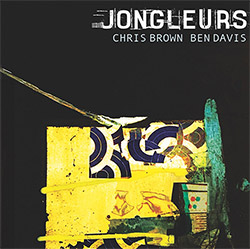
![BlueRing Improvisers: Materia [2 CDs]](https://www.teuthida.com/productImages/misc4/36513.jpg)




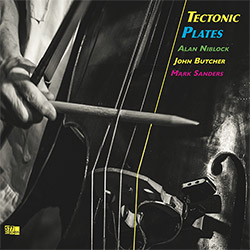



![Wheelhouse (Rempis / Adasiewicz / McBride): House And Home [VINYL]](https://www.teuthida.com/productImages/misc4/36462.jpg)
![+DOG+: The Light Of Our Lives [2 CDs]](https://www.teuthida.com/productImages/misc4/36009.jpg)


![Parker, Evan / Jean-Marc Foussat: Insolence [VINYL]](https://www.teuthida.com/productImages/misc4/36398.jpg)










![Deupree, Jerome / Sylvie Courvoisier / Lester St. Louis / Joe Morris: Canyon [2 CDs]](https://www.teuthida.com/productImages/misc4/36404.jpg)



![Eventless Plot | Haarvol: The Subliminal Paths [CASSETTE + DOWNLOAD]](https://www.teuthida.com/productImages/misc4/36232.jpg)










![Eventless Plot | Francesco Covarino: Methexis [CASSETTE + DOWNLOAD]](https://www.teuthida.com/productImages/misc4/36231.jpg)



![Das B (Mazen Kerbaj / Mike Majkowski / Magda Mayas / Tony Buck): Love [VINYL]](https://www.teuthida.com/productImages/misc4/36329.jpg)


![Eternities: Rides Again [CASSETTE]](https://www.teuthida.com/productImages/misc4/36247.jpg)
![Lopez, Francisco: Untitled (2021-2022) [2 CDs]](https://www.teuthida.com/productImages/misc4/36438.jpg)






![Money : Money 2 [2 CDs]](https://www.teuthida.com/productImages/misc4/35894.jpg)




![Klinga, Erik: Elusive Shimmer [VINYL]](https://www.teuthida.com/productImages/misc4/36258.jpg)
![CHANGES TO blind (Phil Zampino): Volume 9 - I Wave on a Fine Vile Mist [CD + DOWNLOAD]](https://www.teuthida.com/productImages/misc4/36061.jpg)

![Wallmart / Rubbish: Asset Protection [split CD]](https://www.teuthida.com/productImages/misc4/35900.jpg)


![+Dog+: The Family Music Book Vol. 5 [2 CDs]](https://www.teuthida.com/productImages/misc4/35897.jpg)
![Kuvveti, Deli : Kuslar Soyledi [CASSETTE w/ DOWNLOAD]](https://www.teuthida.com/productImages/misc4/36107.jpg)

![Brown, Dan / Dan Reynolds: Live At The Grange Hall [unauthorized][CASSETTE]](https://www.teuthida.com/productImages/misc4/36245.jpg)








![Palestine, Charlemagne / Seppe Gebruers: Beyondddddd The Notessssss [VINYL]](https://www.teuthida.com/productImages/misc4/36206.jpg)
![Palestine, Charlemagne / Seppe Gebruers: Beyondddddd The Notessssss [NEON GREEN VINYL]](https://www.teuthida.com/productImages/misc4/36207.jpg)

![Laubrock, Ingrid: Purposing The Air [2 CDs]](https://www.teuthida.com/productImages/misc4/35639.jpg)

![Yoko, Ono / The Great Learning Orchestra: Selected Recordings From Grapefruit [2 CDs]](https://www.teuthida.com/productImages/misc4/35841.jpg)









![Zorn, John / JACK Quartet: The Complete String Quartets [2 CDs]](https://www.teuthida.com/productImages/misc4/35609.jpg)

![Lonsdale, Eden: Dawnings [2 CDs]](https://www.teuthida.com/productImages/misc4/35480.jpg)



![Sorry For Laughing (G. Whitlow / M. Bates / Dave-Id / E. Ka-Spel): Rain Flowers [2 CDS]](https://www.teuthida.com/productImages/misc4/35985.jpg)

![Rolando, Tommaso / Andy Moor : Biscotti [CASSETTE w/ DOWNLOADS]](https://www.teuthida.com/productImages/misc4/36106.jpg)


![Electric Bird Noise / Derek Roddy: 8-10-22 [CD EP]](https://www.teuthida.com/productImages/misc4/35970.jpg)








![Elephant9 : Mythical River [VINYL]](https://www.teuthida.com/productImages/misc4/34624.jpg)



![Elephant9 with Terje Rypdal: Catching Fire [VINYL 2 LPs]](https://www.teuthida.com/productImages/misc4/35355.jpg)
![Deerlady (Obomsawin, Mali / Magdalena Abrego): Greatest Hits [VINYL]](https://www.teuthida.com/productImages/misc4/34876.jpg)







![Surplus 1980: Illusion of Consistency [CD]](https://www.teuthida.com/productImages/misc4/35069.jpg)
![Staiano, Moe: Away Towards the Light [VINYL + DOWNLOAD]](https://www.teuthida.com/productImages/misc4/35037.jpg)
![Coley, Byron: Dating Tips for Touring Bands [VINYL]](https://www.teuthida.com/productImages/misc4/17906.jpg)

![Lost Kisses: My Life is Sad & Funny [DVD]](https://www.teuthida.com/productImages/misc4/lostKissesDVD.jpg)